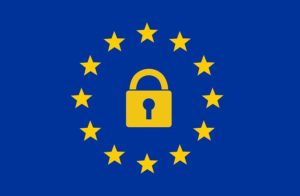How the EU’s General Data Protection Regulation Can Prepare a Website for a SOC Cybersecurity Audit
Prepare a Website for a SOC Cybersecurity Audit
The European Union recently implemented its General Data Protection Regulation and, if you’re involved in the data privacy sector, you’ve almost certainly heard the term GDPR all too often within the past few months. The European-based regulations have international implications, meaning there’s a lot we can learn about these proactive measures and what they could mean for the future of American cybersecurity.
How Does a SOC Audit Help With GDPR Compliance?
While EU countries are the only ones required to follow GDPR, some of the compliance measures are considered universal best practice and can prepare you for a SOC for Cybersecurity report. The entire basis of GDPR is to protect sensitive user data at all costs and provide a transparent look at how user data will be used moving forward. The entire basis of a SOC for Cybersecurity report is to analyze all web-based controls and showcase how an organization proactively works to prevent, monitor for and handle cybersecurity threats. Both work to create a safer and greater web experience for the end user. If you’re GDPR compliant, you’re ahead of the game with your SOC audit.
We have compiled a few ways that you can best prepare for your SOC Cybersecurity audit based on these new GDPR regulations:
Construct a Properly Written Privacy Policy Page
The privacy policy is one of the most overlooked and least trafficked sections of a website. However, after the introduction of GDPR, it has become more important than ever. This page spells out exactly how you will be using any data collected from a website visitor. The goal is to create a completely transparent experience between your website and the user.
Sections to Include In Your Website’s Privacy Policy
- Personal Information Collection, Use & Sharing (and how long you store the information)
- Security & Information Protection
- Account Registration Details
- Cookies & Information Tracking
- Information Used for Marketing Purposes
- Third Party Affiliates (if applicable)
- Future Changes to Privacy Policy
Where Your Privacy Policy Should Live
Not only does your website need a privacy section, but it should be no more than 1-2 clicks away, no matter where a visitor lands on the website. SOC for Cybersecurity best practice suggests that the privacy statement be present on any page with a form or any other type of information submission functionality. To cover your bases, simply include a privacy policy page in the footer of your website – this way, a user can reach it at all times.
Protect Your Website & the Data It Collects
In addition to being as transparent as possible with the data you collect, you must also be doing your due diligence when it comes to protecting this information. The easiest way to do this is to install an SSL certificate on your website. This simple encryption acts as a “digital passport” between a computer and your website/the server your website is hosted on, further protecting sensitive data, like credit card numbers, social security numbers, contact information and more.
Website Functionality: No More Cutting Corners
Additionally, minimizing the amount of 3rd party plugins used throughout your website will drastically decrease the risk of a potentially detrimental security breach. If you would like to add specific functionality to your website, it is best practice to build from the ground up instead of relying on low-security plugins.
For more information regarding GDPR & SOC for Cybersecurity, contact the SOC Team at Holbrook & Manter today.
